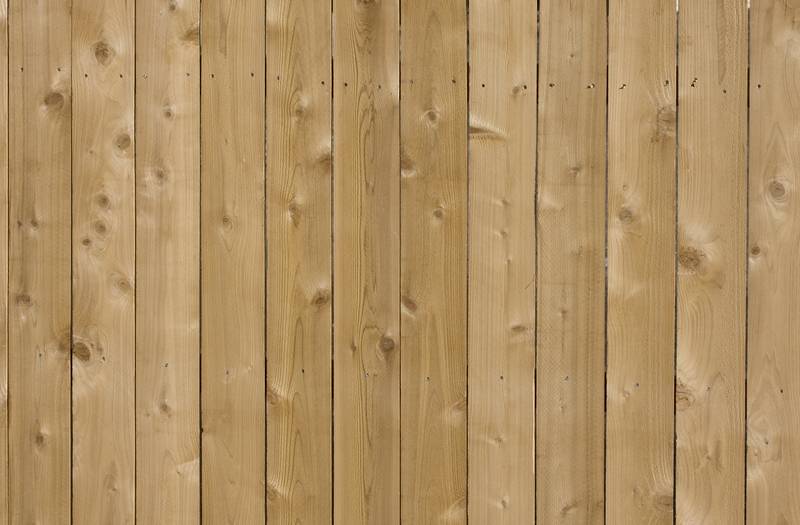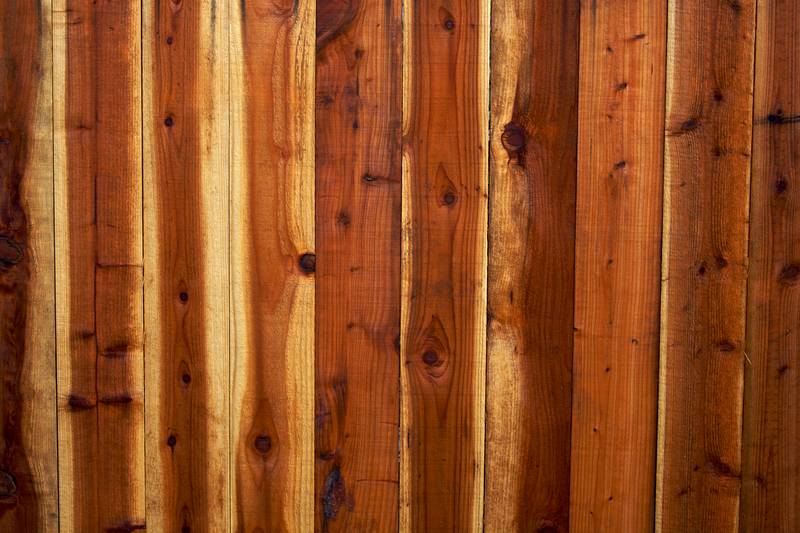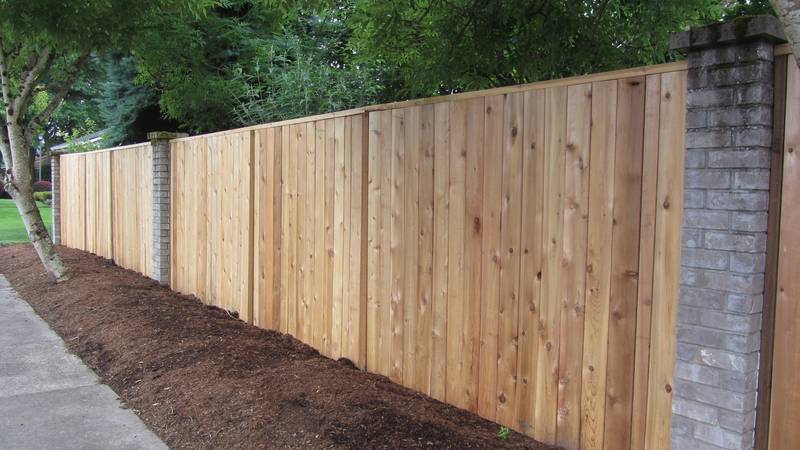Are you in the market for a new wood fence but don’t know whether to choose cedar or redwood? Both options are excellent choices, but they do have their differences. When we discuss cedar in this article we specifically mean Western Red Cedar (Thuja plicata).
In this article, we’ll break down the pros and cons of cedar and redwood (Sequoioideae) so that you can make an informed decision.
Natural Beauty and Color
Regarding aesthetics, both cedar and redwood fences have a natural beauty that’s hard to beat. Cedar has a light, yellowish-brown color ranging from a pale honey color to a rich, reddish-brown one.

Redwood has a deep, rich reddish-brown color that can vary from light to dark. Both are beautiful options that give your property a warm and inviting look.
But looks aren’t everything, so let’s dive deeper into the differences between cedar and redwood fences.

Durability
You want to make sure your fence can withstand the test of time and weather, so it’s important to consider the durability of the wood you choose. Both cedarwood and redwood are known for their durability, but there are some differences between the two that homeowners should consider when choosing.
- Moisture resistance: Cedarwood is more moisture-resistant than redwood, making it less likely to decay and rot. This durability makes cedarwood a great choice for homeowners who live in areas with high humidity or frequent rainfall.
- Pest resistance: Redwood has more tannin than cedarwood, making it more resistant to pests like termites and carpenter ants. Increase insect resistance makes redwood a better choice for homeowners who live in areas with a high risk of pest infestations.
While redwood is more durable than cedar, both types of wood have similar rot resistance due to tannin.
A treated Western Red Cedar fence will last 35-40 years, making it a long-lasting and cost-effective choice.
Using the Janka Test, redwood fence is 23% stronger than cedar, with a Janka rating of 450lbs, while Western Red Cedar has a Janka rating of 350lbs.
The extra strength of redwood may not be a requirement for your fencing project, but if you need extra durability then redwood offers an advantage.
Maintenance
Maintenance is another factor to consider when choosing between cedar and redwood for your fence.
Cedar is easier to stain due to its lighter color, while redwood requires more maintenance due to its natural oils that can cause it to gray over time.
If you choose cedar, it’s important to treat it with a wood preservative to extend its lifespan and reduce its environmental impact.
Cost
Cedarwood is generally less expensive than redwood. While both woods are a great investment, cedarwood may be a better choice for homeowners on a budget.
When choosing between cedarwood and redwood for your fence, it’s important to consider the specific conditions of your area. For example, cedarwood may be the better choice if you live in an area with high humidity or frequent rainfall due to its moisture resistance. On the other hand, if you live in an area with a high risk of pest infestations, redwood may be the better choice due to its pest resistance.
Ultimately, both kinds of wood are a great investment and can provide homeowners with a beautiful and durable fence.
Eco Friendly
If you’re looking for an environmentally friendly option for your next wood fence, cedarwood and redwood are excellent choices.
Both types of wood are 100% natural products and are certified by the Forest Stewardship Council, ensuring they are responsibly harvested.
Additionally, both cedar and redwood have similar environmental requirements and take 50+ years to harvest, making them sustainable choices for fencing material.
Sustainability
Choosing sustainable materials for your next outdoor project is crucial. Luckily, both cedar and redwood are environmentally friendly options certified by the Forest Stewardship Council and take over 50 years to harvest.
When it comes to sustainability, redwood is the better option. This is because redwood harvests less than the annual growth rate, making it a more renewable resource. Moreover, redwood fences are more durable than cedar fences, meaning they will require less maintenance over time and ultimately have a smaller environmental impact.
Cost
When considering the cost of materials for your outdoor project, it’s important to remember that prices may vary depending on your location and the current market demand.
Cedar wood is generally cheaper than redwood, making it a more budget-friendly option for a fence. In fact, a cedar fence can cost around $15-$30 per linear foot, while a redwood fence may cost around $20-$35 per linear foot.
However, it’s important to note that the cost of installation may also vary depending on the type of fence you choose.
A cedar fence may require more maintenance, which could add up in the long run. A redwood fence will be more durable and requires less maintenance, which could make it a more cost-effective option in the long term despite the higher initial investment.
Ultimately, the choice between cedar and redwood will depend on your specific needs and priorities.
Frequently Asked Questions
Conclusion
So now that you know the differences between cedar and redwood wood fences, it’s time to make a decision. Ultimately, the choice will come down to your personal preferences and budget.
If you’re looking for a fence with a warm, inviting color and natural beauty, cedar may be the way to go. But if you want a fence that is highly durable and sustainable, redwood is the better option.
No matter which you choose, both cedar and redwood are environmentally friendly and excellent choices for a wood fence that will last for many years to come and add value to your property.
